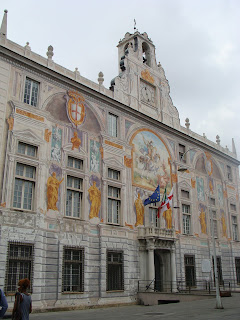
The Palazzo, now the headquarters of the Port Authority of Genoa, lies at the centre of the medieval port, between the Old Wharf and the Commenda di Prè, and was built in 1260, the first public building in Genoa.
Its construction was the outcome of a commission by the Captain of the People, Guglielmo Boccanegra, and the technical expertise of Brother Oliverio, a Cistercian monk from the Abbey of S. Andrea di Sestri, who had worked on the first extension of the Old Wharf.
In the 14th century a customs office was installed, and magistrates were engaged to control port traffic and extract taxes.
In 1407, the offices of the S. Giorgio bank, which administered the entire public debt of the state of Genoa, were permanently houses on the upper floors.
In 1570, due to the continuous growth of the Bank, the Palazzo was extended to the sea, and the front prospect was decorated with frescoes by Lorenzo Tavarone.
At the end of the 19th century, the building complex was restored by Alfredo D’Andrade, director of the office for the conservation of the monuments of Piedmont and Liguria, with the restoration of the most important internal areas: the hall of the Captain of the People, Manica Lunga and Manica Corta.
Since 1903, it has been the headquarters of the Port Authority of Genoa.
Font:
http://www.porto.genova.it/index.php/en/the-genoa-port/port-yesterday/palazzo-san-giorgio

